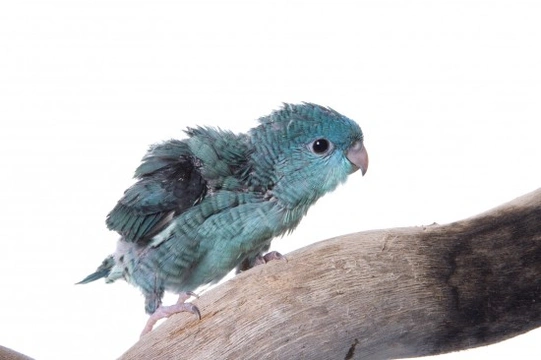
Lineolated Parakeets (Linnies): Care and Breeding Guide
The Barred Parakeet (Bolborhynchus lineola), often called the Lineolated Parakeet or "Linnie," is a small, charming parrot species native to highland forests across south Mexico down to Panama, Venezuela, and southern Peru. Linnies are about 16cm long, similar in size to lovebirds and budgies, featuring a short tail and distinctive barred plumage. These birds live naturally at elevations up to 2000m and are hardy enough to sometimes enjoy snow baths.
In the wild, linnies fly or walk across dense forests and mountain areas, forming flocks of 20 to 100 birds. Their green feathers are marked with black and dark green stripes, offering excellent camouflage. Males and females look very similar, so determining sex usually requires DNA testing.
Keeping Linnies as Pets
Linnies are sought-after pets due to their mild temperament, intelligence, and ease of care. Unlike larger parrots, they are not restricted to favoring one person exclusively, and they enjoy social interaction with all household members. With proper supervision, children can safely handle them.
Careful attention to diet is critical. Linnies primarily eat seeds, but also benefit from specialised pellets alongside fresh greens like kale, broccoli, and cabbage. Vegetables such as carrots and cauliflower, as well as fruits like banana, apple, apricot, and orange, are great supplements. Treats can include strawberries, pumpkin seeds, alfalfa, and sunflower seeds. Scrambled or boiled eggs with shell provide essential calcium, especially for egg-laying females.
Their lifespan in captivity typically ranges from 10 to 15 years, although excellent care can extend this. Linnies are generally calm, with soft chattering calls and remarkable mimicry skills—some can learn words and sounds, making them delightful companions.
Linnies are climbers and chewers, investigating objects with cautious nibbling. To enrich their environment, provide safe toys and plenty of perches. Introduce new items slowly outside or in less frequented cage corners to allow them to acclimatise safely.
Many linnies happily cohabit with other cage mates like finches, canaries, Bourkes, and Kakarikis if space is ample and multiple food bowls are offered to minimise disputes.
For bathing, linnies enjoy being misted with water, especially when snow is unavailable. They delight in hanging upside down and spreading their wings to maximise water coverage before preening thoroughly.
Breeding Linnies
Linnies are affectionate with their partners and engage in mutual preening as part of courtship. In captivity, provide a budgerigar-sized or slightly larger nesting box. Females spend more time in the nest before laying 2 to 4 eggs, which hatch after 18-21 days. Males guard and occasionally join females in the nest, indicating strong pair bonds.
Chicks are covered in dark grey down at birth, developing their coloured feathers by three weeks and fledging after about five weeks. The adults usually tolerate gentle nest inspections, as the chicks are quiet during this time.
Conclusion
As pets, Lineolated Parakeets are gentle, engaging, and suitable for families seeking a quieter parakeet species. Their manageable size, affectionate nature, and moderate noise levels make them ideal for various living situations. Providing proper diet, social interaction, and environmental enrichment ensures happy, healthy linnies for years to come.



